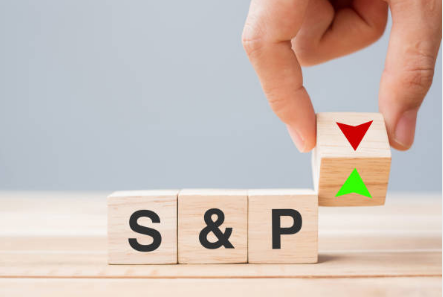
Skylar Shaw
May 12, 2022 10:32

On Wednesday, U.S. equities fell sharply as the economy faced rising headwinds and Wall Street's risk appetite dwindled. The S&P 500 index fell 1.65% to 3,935, its lowest level since March 2021, at the close. The Dow Jones Industrial Average dropped 1.02 percent to 31,834, a new year low. The Nasdaq 100, however, took the brunt of the sell-off, falling 3.06 percent to 11,967 amid a dramatic collapse in the IT world, with Apple, Microsoft, and Amazon all in free fall.
The positive atmosphere flipped and made a 180-degree turn as the U.S. consumer price index for April produced another negative surprise, despite equities futures trading considerably higher in the pre-market session. For reference, the annual CPI fell to 8.3 percent in April from 8.5 percent in March, but the figure was two-tenths of a percent more than expected, indicating that wider pricing pressures are still there. The core indicator also outperformed expectations, rising 6.3 percent year over year, a little decrease from the 6.5 percent increase anticipated at the end of the first quarter.
While the headline and core indicators have improved, Wednesday's data served as a stark reminder that the Federal Reserve still faces a long and arduous road to restore price stability.
Looking ahead, favorable base effects should help push year-over-year inflation numbers down, but with the underlying trend still running well above desirable levels, the Fed is likely to maintain its hawkish stance and continue to front-load interest rate hikes over the next few meetings in order to quickly bring monetary policy to a neutral stance.
Overall, with inflation reaching four-decade highs, it's feasible that central bank policy hawkishness hasn't hit its pinnacle. In light of this, US Treasury rates may rise in the short future, increasing recession worries and dampening market sentiment. Risk appetite will remain low in this scenario, preventing a major equities market comeback. Indeed, the current "sell the rip" phenomena, in which speculators short any rise for fear of equities failing to sustain gains, may persist.
The Nasdaq 100 dropped below a crucial support level in the 12,210 range on Wednesday, falling to a new 2022 low of 11,967. Sellers may target the 11,600 level in the next sessions, with the tech index in bear market and heavily tilted to the negative. If the market continues to fall, the next floor to examine is around the 11,000 level. If, on the other hand, dip buyers return and drive the benchmark higher, the first line of resistance is at 12,210, followed by 12,645. If these obstacles are overcome, the attention will turn to the 13,000 mark.

May 12, 2022 10:18
